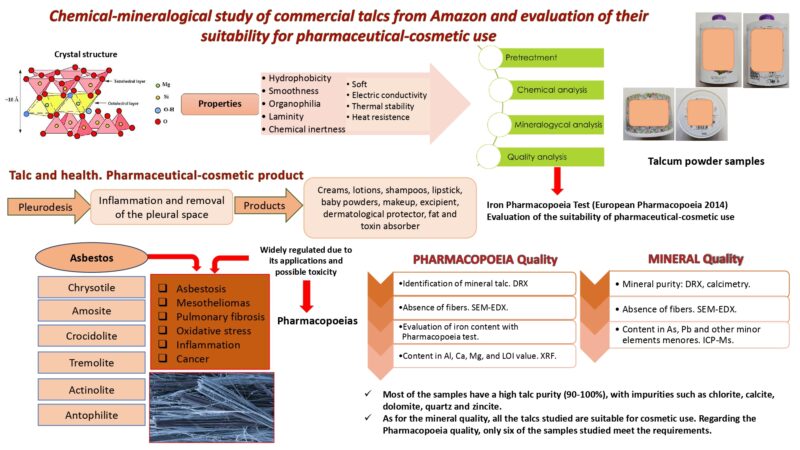
Talc is a hydrated magnesium silicate, with the formula Mg3(OH)2Si4O10, which may contain small amounts of other associated minerals, such as Chlorite, Calcite, Dolomite and Magnesite. The characteristics of talc make it a unique raw material with a wide variety of applications in different industrial sectors, including the pharmaceutical-cosmetic sector.
In this research, we carried out a chemical, mineralogical and Pharmacopoeia study of samples of various talcum powders purchased on Amazon, by applying the European Pharmacopoeia standards and other complementary methods such as: XRF, XRD, ICP-mass, SEM-EDX, calcimetry and atomic absorption.
Most of the samples had a high talc purity (90-100%) with a few impurities such as Chlorite, Calcite, Dolomite, Quartz and Zincite.
In terms of mineral quality, all the talcum powders studied were suitable for cosmetic use. However, in terms of Pharmacopoeia quality, only six of the samples met the requirements.
Keywords: Talc; European Pharmacopoeia; Mineral quality; Pharmaceutical-Cosmetic Use; Impurities.
Directed by: María Virginia Fernández González
Leave a Reply